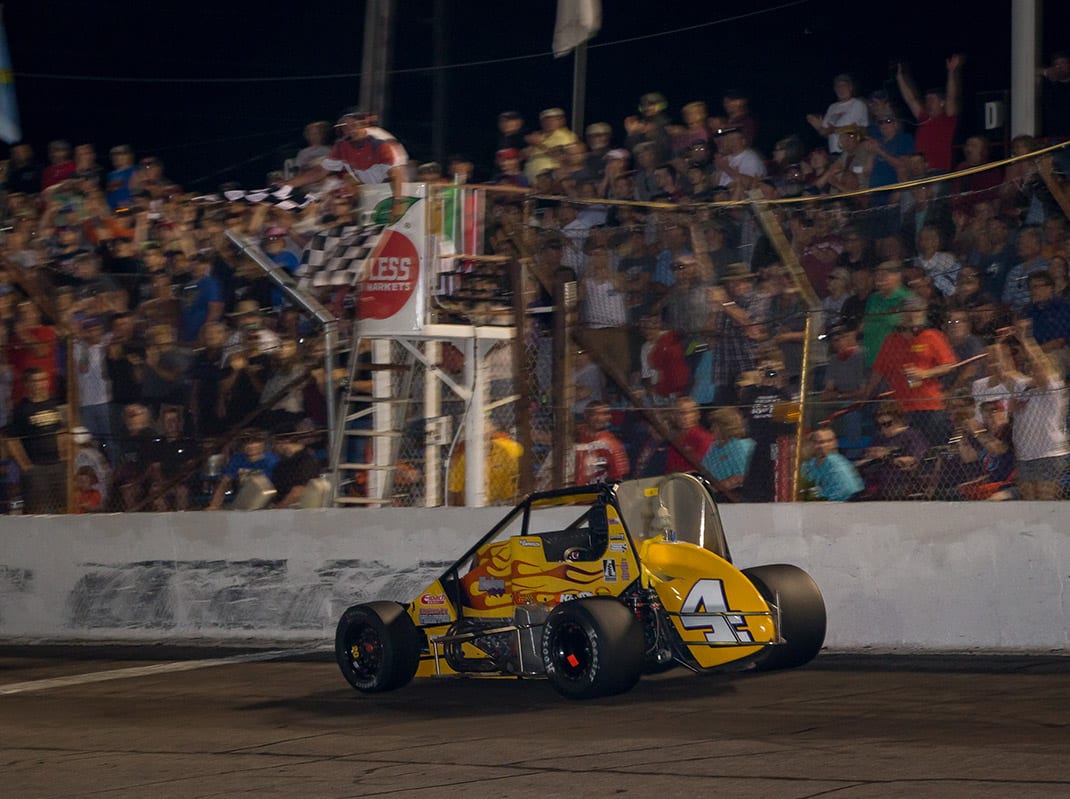How do you win the richest asphalt sprint car race in the world — the Pay Less Super Markets Little 500 at Anderson (Ind.) Speedway?
We asked that question of Kody Swanson, who has won the classic short-track race run on the night before the Indianapolis 500 in each of the last two years and three times overall in only five starts, never finishing out of the top 10.
He will go for another victory in the 72nd annual edition of the race, which was postponed on April 20 because of the COVID-19 outbreak and rescheduled for Sept. 5.
Swanson claims a lot of different factors have to align for one to finish the race, let alone win it.
“First, the duration of the race makes it one of a kind in asphalt sprint car racing, since it’s 500 laps on a quarter-mile oval,” he said. “You have to make two mandatory pit stops, one before halfway and one anytime; that breaks the race up into a minimum of three stints. You have multiple sets of Hoosier tires, which is also unique to that race. Certain teams do things differently with tire strategy to try to put themselves in a good position at the end.”
Strategy comes up often as the conversation continues. The bottom line is a team should have one, but it also has to be willing to throw all those plans out the window to react to how the race is playing out.
But let’s start at the beginning.
“Pole Day qualifying is Thursday and it’s a modified version in order to be similar to the Indy 500; you do a four-lap average and you get up to three attempts to post an official time,” Swanson explained. “But if you take the checkered flag and you finish all four laps, you own that time. If you’re going to wave off, you have to do that early.”
How important is it to qualify well?
According to the records on the track’s website, the polesitter has won the race 14 times, including Swanson’s victory last May.

“Eric Gordon has won it from 20th or something, but I think everyone agrees it’s easier to be in the front half of the field to start,” Swanson said. “The place gets pretty crowded with 33 cars on a quarter-mile track. You want to try not to go a lap down early. Sometimes you’re going to cycle through a stop and be a lap down anyway, but if you can avoid getting behind early it helps.”
Swanson says the track changes throughout the race and “it has some bumps that make it fun.
“As the race wears down, we put rubber down on the track that makes the surface different and usually there’s some oil on the track too, so it keeps you moving around (to find the fastest line),” he said. “But just the size of the track and with the sheer number of cars, you’re always trying to gain track position. It’s a fun thing to try to race for 500 laps. There’s a lot involved. It’s a tough race to get to the end of, let alone get to the front.”
A driver’s spotter and whoever is calling the race strategy are vital.
“Pit strategy is very important,” Swason said. “One of the things I try to always be aware of is where I am in traffic. You’re racing different cars pending on the cycles of pit stops. Maybe you were faster than another driver earlier in the race, but maybe they came in for fresh tires and now they’re as fast or faster than you are. In a typical 25- or 30-lap sprint car race, you might be fastest from start to finish, but in the Little 500 you’re constantly adapting and running with different cars.”
While Swanson is busy dicing with all these different cars, his team is thinking about strategy.
“I don’t know what is discussed during long green-flag runs, but when the caution comes out the strategy is discussed a little bit over the radio, and the race takes on a life of its own,” he said. “The thoughts you had going into the race can change, and sometimes they have to change. Each year it’s a little bit different. It depends on when the cautions fall, how your car is running, how your main competitors are running, and how fresh your tires are. You just try to get the combination right as it comes.”
Click below to keep reading.
